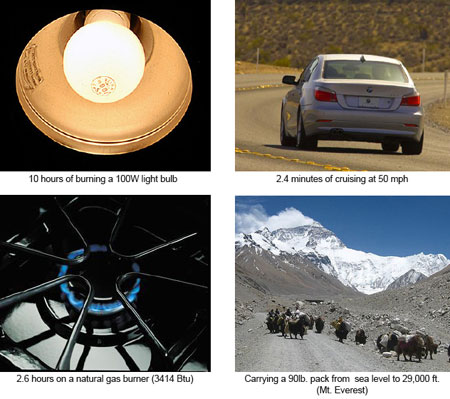|
|
 |
| |
|
What is 1 kWh?
All forms of power can be expressed in terms of kilowatt-hours (kWh). Using a single power currency allows us to relate the many forms of energy at work in buildings: electricity, natural gas heat, propane heat, and solar energy. |
|
| |
| |
| |
|
Electricity, Natural Gas and Propane Emissions Compared
Different sources of power emit different amounts of carbon dioxide. Natural gas and propane are burned for heat on site. Electricity in Colorado comes from remote power plants which burn mostly coal and suffer line losses between the plant and the house -- emitting four times as much carbon dioxide as natural gas or propane. |
|
| |
| |
| |
|
Fuel Prices Are Rising
Fuel prices fluctuate on the short term, but consistently trend upwards as supply dwindles and extraction becomes more difficult. As the price of natural gas and propane rises more steeply than that of electricity, electric home heating becomes cost-competitive, but poses a danger to climate by emitting four times as much carbon dioxide as natural gas. |
|
| |
| |
| |
|
Size Matters
Annual COEmissions (lbs) of Equal Construction but Varying Size
The simplest way to reduce the environmental impact of a house is to make it smaller. The heating and electrical requirements of a house increase in proportion to the interior volume and the exterior wall surface. Sharing walls, as in townhouses and apartments, further reduces the need for heating fuel. |
|
| |
| |
|